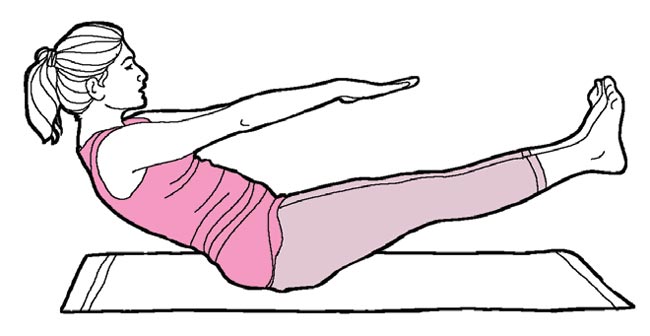Tadasana- mountain pose or palm tree pose
Tadasana or mountain pose is an important asana in yoga. Tadasana is a Sanskrit word which means tada means mountain and asana means posture. This asana was not known or mentioned in hatha yoga. Tadasana is considered as the foundation for all the other standing asanas in yoga.
Step by step procedure
- Stand straight with feet together and arms hang by your side.
- Weight of your body should evenly be distributed on both your feet. Both feet should be well grounded. Breathing should be normal and rhythmic.
- Now lift all the toes spreading them apart but holding steadily on the ground.
- Later place back the toes to the ground and should press all the four corners of your feet evenly to the ground.
- Keep the thigh muscles firm and lift the kneecaps without hurting the muscles of your inner organs .
- Push up the inner ankles to strengthen the arches. Now turn the upper thigh slightly inward to widen the sit bones. Gradually lengthen the tail bones so that it comes exactly between the sit bones.
- Bring the pelvis into the normal position.
- Inhale while elongating the torso, exhale while releasing the shoulder blades away from the head.
- An energy can be felt all along the inner thighs to groin from there to torso, neck up till the head.
- Keep the arms straight above with the neck elongated and facing the roof.
- Shoulder should be parallel to the pelvis.
- Be in his position for 30 seconds by breathing rhythmically deep and easy.
- Relax to the normal position, and repeat the procedure again.
- For beginners it may be difficult to do balance in this asana. So, in order to improve the balance, place the feet about three to five feet inches away till you are comfortable.

Benefits of doing Tadasana
- Strengthens the thigh muscles, knees, buttocks, ankles and abdomen.
- Helps in maintaining the body posture and also helps in the flexibility in hip joints along with spine.
- This asana helps in the major systems of our body like the respiratory, nervous and digestive system.
- Removes dullness and depression from mind and makes one feel fresh.
- Reduces the problem of flat feet. Improves blood circulation.
- Helps in increase of height
Precautions for doing Tadasana
Pregnant women should consult a doctor before doing this asana.
Excess stretch may cause knee pain or injury.
People suffering from neck pain, headache and insomnia should consult a doctor before doing this asana.
This asana should not be performed if you have any back injury.
People with heart diseases should avoid or consult a physician before doing.
Variations:
You can do variations in many ways. Firstly you can extend your arms toward the roof so that they are perpendicular to the floor and parallel to each other. Your palms should be facing each other. Alternatively you can cross your fingers and stretch your arms upwards.
You can also cross your arms behind your back such that each palm holds the opposite elbow. Repeat the pose by interchanging your hands.
Update on coronavirus in India
Affiliate Disclosure:
If you make any purchase via a link on this site, I may receive a small commission with no added cost to you.


















